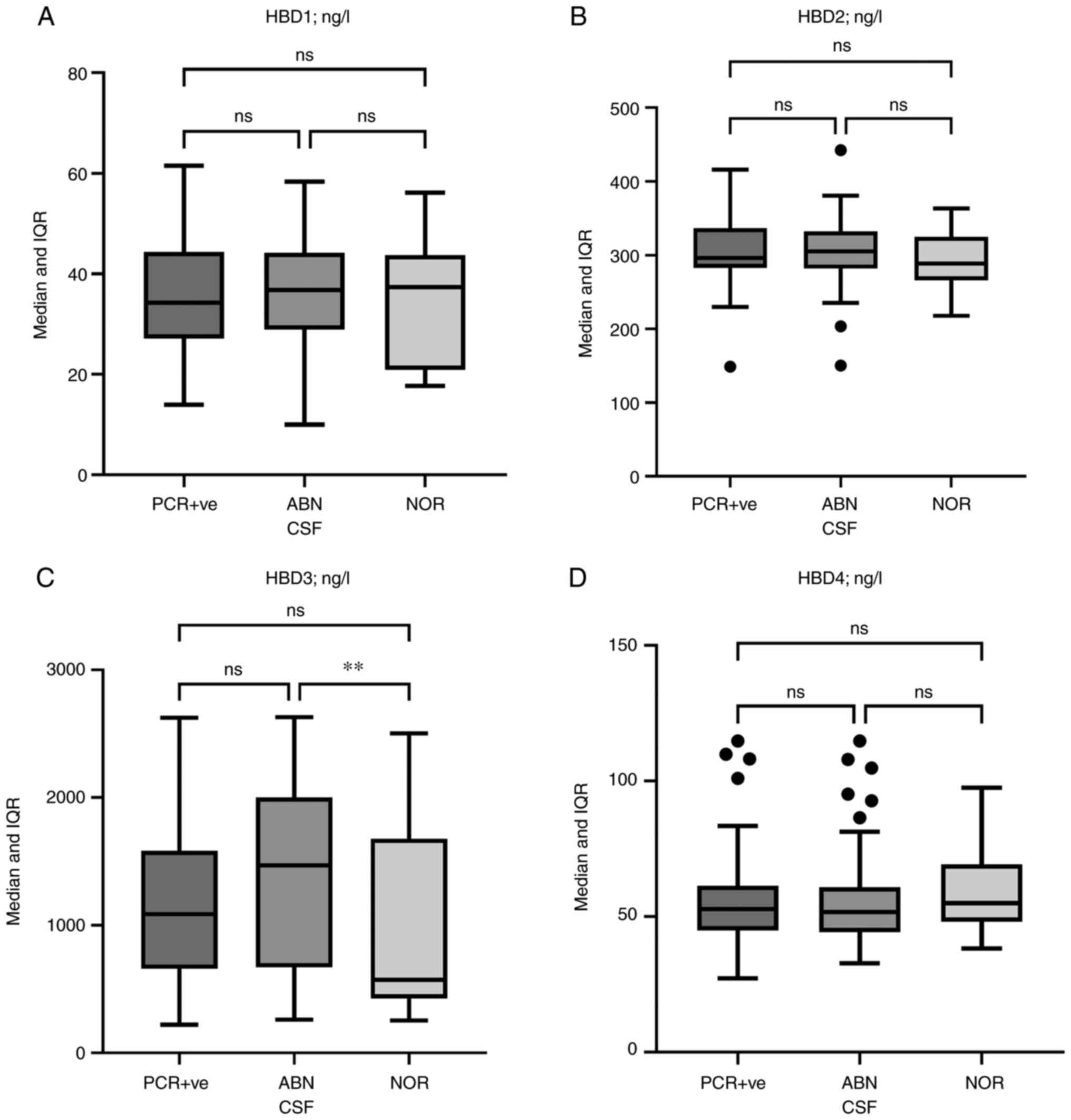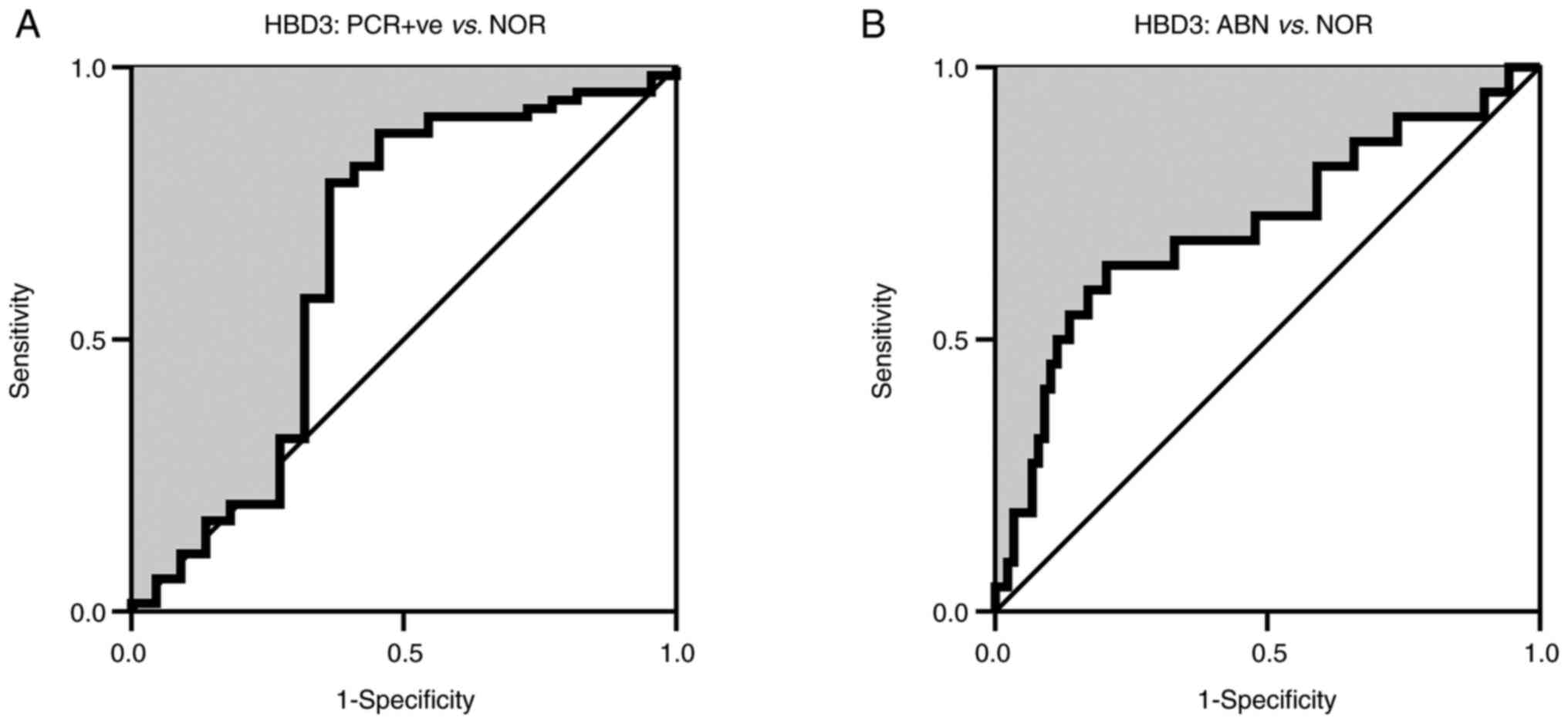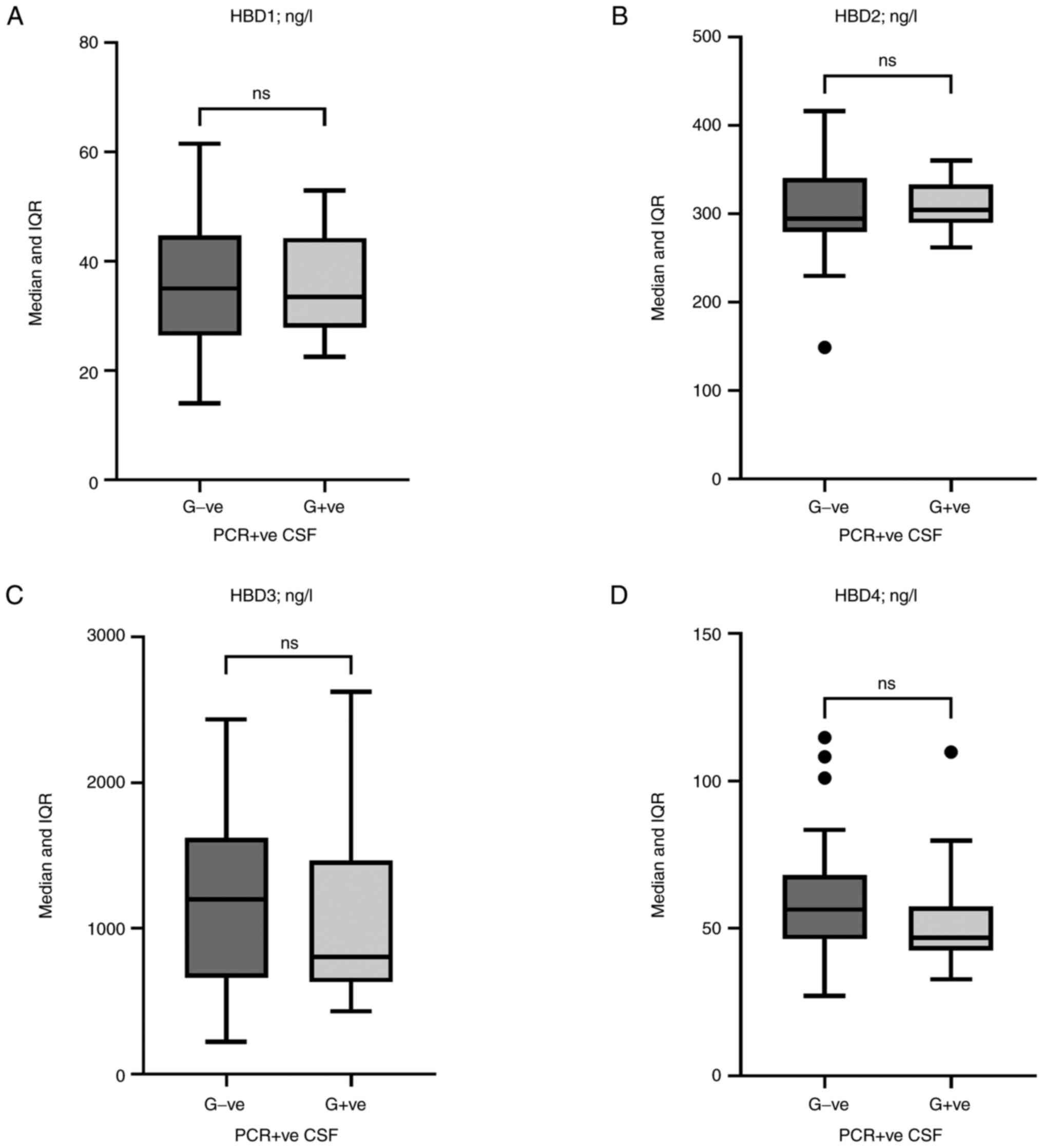|
1
|
Young N and Thomas M: Meningitis in
adults: Diagnosis and management. Intern Med J. 48:1294–1307.
2018.PubMed/NCBI View Article : Google Scholar
|
|
2
|
Hersi K, Gonzalez FJ, Kondamudi NP and
Sapkota R: Meningitis (Nursing). StatPearls [Internet]. Treasure
Island (FL): StatPearls Publishing, 2022.
|
|
3
|
Griffiths MJ, McGill F and Solomon T:
Management of acute meningitis. Clin Med (Lond). 18:164–169.
2018.PubMed/NCBI View Article : Google Scholar
|
|
4
|
Centers for Disease Control and
Prevention: Chapter 2: Epidemiology of Meningitis Caused by
Neisseria meningitidis, Streptococcus pneumoniae, and
Haemophilus influenza. https://www.cdc.gov/meningitis/lab-manual/chpt02-epi.html.
Accessed February 19, 2022.
|
|
5
|
GBD 2016 Meningitis Collaborators. Global,
regional, and national burden of meningitis, 1990-2016: A
systematic analysis for the Global Burden of Disease Study 2016.
Lancet Neurol. 17:1061–1082. 2018.PubMed/NCBI View Article : Google Scholar
|
|
6
|
Al-Sanouri T, Mahdi S, Khader IA, Mahdi A,
Dogu A, Amiche A, Iweir S, Qader M, Belbaisi A and AlHilfi R: The
epidemiology of meningococcal meningitis: multicenter,
hospital-based surveillance of meningococcal meningitis in Iraq.
IJID Reg. 1:100–106. 2021.PubMed/NCBI View Article : Google Scholar
|
|
7
|
Bagheri-Nesami M, Babamahmoodi F and
Nikkhah A: Types, risk factors, clinical symptoms and diagnostic
tests of acute adult meningitis in northern Iran during 2006-2012.
J Clin Diagn Res. 9:IC01–IC05. 2015.PubMed/NCBI View Article : Google Scholar
|
|
8
|
Grandgirard D, Gäumann R, Coulibaly B,
Dangy JP, Sie A, Junghanss T, Schudel H, Pluschke G and Leib SL:
The causative pathogen determines the inflammatory profile in
cerebrospinal fluid and outcome in patients with bacterial
meningitis. Mediators Inflamm. 2013(312476)2013.PubMed/NCBI View Article : Google Scholar
|
|
9
|
Coutinho LG, Grandgirard D, Leib SL and
Agnez-Lima LF: Cerebrospinal-fluid cytokine and chemokine profile
in patients with pneumococcal and meningococcal meningitis. BMC
Infect Dis. 13(326)2013.PubMed/NCBI View Article : Google Scholar
|
|
10
|
Tzeng YL and Stephens DS: Antimicrobial
peptide resistance in Neisseria meningitidis. Biochim Biophys Acta.
1848 (11 Pt B):3026–3031. 2015.PubMed/NCBI View Article : Google Scholar
|
|
11
|
Wassing GM, Ilehag N, Frey J and Jonssona
AB: Modulation of human beta-defensin 2 expression by pathogenic
neisseria meningitidis and commensal lactobacilli. Antimicrob
Agents Chemother. 65:e02002–e02020. 2021.PubMed/NCBI View Article : Google Scholar
|
|
12
|
Mahlapuu M, Håkansson J, Ringstad L and
Björn C: Antimicrobial peptides: An emerging category of
therapeutic agents. Front Cell Infect Microbiol.
6(194)2016.PubMed/NCBI View Article : Google Scholar
|
|
13
|
Huan Y, Kong Q, Mou H and Yi H:
Antimicrobial peptides: Classification, design, application and
research progress in multiple fields. Front Microbiol.
11(582779)2020.PubMed/NCBI View Article : Google Scholar
|
|
14
|
Kumar P, Kizhakkedathu JN and Straus SK:
Antimicrobial peptides: Diversity, mechanism of action and
strategies to improve the activity and biocompatibility in vivo.
Biomolecules. 8(4)2018.PubMed/NCBI View Article : Google Scholar
|
|
15
|
Fruitwala S, El-Naccache DW and Chang TL:
Multifaceted immune functions of human defensins and underlying
mechanisms. Semin Cell Dev Biol. 88:163–172. 2019.PubMed/NCBI View Article : Google Scholar
|
|
16
|
Park MS, Kim JI, Lee I, Park S, Bae JY and
Park MS: Towards the application of human defensins as antivirals.
Biomol Ther (Seoul). 26:242–254. 2018.PubMed/NCBI View Article : Google Scholar
|
|
17
|
Huang L, Ching CB, Jiang R and Leong SS:
Production of bioactive human beta-defensin 5 and 6 in Escherichia
coli by soluble fusion expression. Protein Expr Purif. 61:168–174.
2008.PubMed/NCBI View Article : Google Scholar
|
|
18
|
Ali ZA, Mankhi AA and Ad'hiah AH:
Significance of the chemokine CXCL10 and human beta-defensin-3 as
biomarkers of pulmonary tuberculosis. Tuberculosis (Edinb).
128(102078)2021.PubMed/NCBI View Article : Google Scholar
|
|
19
|
Al-Bayatee NT and Ad'hiah AH: Human
beta-defensins 2 and 4 are dysregulated in patients with
coronavirus disease 19. Microb Pathog. 160(105205)2021.PubMed/NCBI View Article : Google Scholar
|
|
20
|
Shelley JR, Davidson DJ and Dorin JR: The
dichotomous responses driven by β-Defensins. Front Immunol.
11(1176)2020.PubMed/NCBI View Article : Google Scholar
|
|
21
|
Williams WM, Castellani RJ, Weinberg A,
Perry G and Smith MA: Do β-defensins and other antimicrobial
peptides play a role in neuroimmune function and neurodegeneration?
ScientificWorldJournal. 2012(905785)2012.PubMed/NCBI View Article : Google Scholar
|
|
22
|
Merres J, Höss J, Albrecht LJ, Kress E,
Soehnlein O, Jansen S, Pufe T, Tauber SC and Brandenburg LO: Role
of the cathelicidin-related antimicrobial peptide in inflammation
and mortality in a mouse model of bacterial meningitis. J Innate
Immun. 6:205–218. 2014.PubMed/NCBI View Article : Google Scholar
|
|
23
|
Wassing GM, Lidberg K, Sigurlásdóttir S,
Frey J, Schroeder K, Ilehag N, Lindås AC, Jonas K and Jonsson AB:
DNA Blocks the lethal effect of human beta-defensin 2 against
Neisseria meningitidis. Front Microbiol. 12(697232)2021.PubMed/NCBI View Article : Google Scholar
|
|
24
|
Fleischer E, Neuman MI, Wang ME, Nigrovic
LE, Desai S, DePorre AG, Leazer RC, Marble RD, Sartori LF and
Aronson PL: FEBRILE YOUNG INFANT RESEARCH COLLABORATIVE.
Cerebrospinal fluid profiles of infants ≤60 days of age with
bacterial meningitis. Hosp Pediatr. 9:979–982. 2019.PubMed/NCBI View Article : Google Scholar
|
|
25
|
Martín-Ancel A, García-Alix A, Salas S,
Del Castillo F, Cabañas F and Quero J: Cerebrospinal fluid
leucocyte counts in healthy neonates. Arch Dis Child Fetal Neonatal
Ed. 91:F357–F358. 2006.PubMed/NCBI View Article : Google Scholar
|
|
26
|
Kononen TR, Mooney KM and Hoekstra KA: A
slight shade of green. Clin Chem. 65:939–940. 2019.PubMed/NCBI View Article : Google Scholar
|
|
27
|
Lu JJ, Perng CL, Lee SY and Wan CC: Use of
PCR with universal primers and restriction endonuclease digestions
for detection and identification of common bacterial pathogens in
cerebrospinal fluid. J Clin Microbiol. 38:2076–2080.
2000.PubMed/NCBI View Article : Google Scholar
|
|
28
|
Hrishi AP and Sethuraman M: Cerebrospinal
fluid (CSF) analysis and interpretation in neurocritical care for
acute neurological conditions. Indian J Crit Care Med. 23 (Suppl
2):S115–S119. 2019.PubMed/NCBI View Article : Google Scholar
|
|
29
|
Carbonnelle E: Laboratory diagnosis of
bacterial meningitis: Usefulness of various tests for the
determination of the etiological agent. Med Mal Infect. 39:581–605.
2009.PubMed/NCBI View Article : Google Scholar
|
|
30
|
Zhu C, Bao NR, Chen S and Zhao JN: The
mechanism of human β-defensin 3 in MRSA-induced infection of
implant drug-resistant bacteria biofilm in the mouse tibial bone
marrow. Exp Ther Med. 13:1347–1352. 2017.PubMed/NCBI View Article : Google Scholar
|
|
31
|
Dhingra H, Kaur K and Singh B: Engineering
and characterization of human β-defensin-3 and its analogues and
microcin J25 peptides against Mannheimia haemolytica and bovine
neutrophils. Vet Res. 52(83)2021.PubMed/NCBI View Article : Google Scholar
|
|
32
|
Hirsch T, Spielmann M, Zuhaili B, Fossum
M, Metzig M, Koehler T, Steinau HU, Yao F, Onderdonk AB,
Steinstraesser L and Eriksson E: Human beta-defensin-3 promotes
wound healing in infected diabetic wounds. J Gene Med. 11:220–228.
2009.PubMed/NCBI View
Article : Google Scholar
|
|
33
|
Chessa C, Bodet C, Jousselin C, Larivière
A, Damour A, Garnier J, Lévêque N and Garcia M: Antiviral effect of
hBD-3 and LL-37 during Human primary keratinocyte infection with
west nile virus. Viruses. 14(1552)2022.PubMed/NCBI View Article : Google Scholar
|
|
34
|
Quiñones-Mateu ME, Lederman MM, Feng Z,
Chakraborty B, Weber J, Rangel HR, Marotta ML, Mirza M, Jiang B,
Kiser P, et al: Human epithelial β-defensins 2 and 3 inhibit HIV-1
replication. AIDS. 17:F39–F48. 2003.PubMed/NCBI View Article : Google Scholar
|
|
35
|
Al Mansour N, Al-Kafaji G, Al Mahmeed A
and Bindayna KM: Dysregulation of human beta-defensin-3 expression
in the peripheral blood of patients with sepsis. SAGE Open Med.
9(20503121211041515)2021.PubMed/NCBI View Article : Google Scholar
|
|
36
|
Meisch JP, Nishimura M, Vogel RM, Sung HC,
Bednarchik BA, Ghosh SK, Fu P, McCormick T, Weinberg A and Levine
AD: Human β-Defensin 3 peptide is increased and redistributed in
Crohn's Ileitis. Inflamm Bowel Dis. 19:942–953. 2013.PubMed/NCBI View Article : Google Scholar
|
|
37
|
Cui D, Lyu J, Li H, Lei L, Bian T, Li L
and Yan F: Human β-defensin 3 inhibits periodontitis development by
suppressing inflammatory responses in macrophages. Mol Immunol.
91:65–74. 2017.PubMed/NCBI View Article : Google Scholar
|
|
38
|
Cieślik M, Bagińska N, Górski A and
Jończyk-Matysiak E: Human β-defensin 2 and its postulated role in
modulation of the immune response. Cells. 10(2991)2021.PubMed/NCBI View Article : Google Scholar
|
|
39
|
Ahmed MB and Ad'hiah AH: Allergic Rhinitis
and asthma: A profile of beta-defensins in serum of Iraqi patients.
Iraqi J Sci. 63:1941–1954. 2022.
|

















